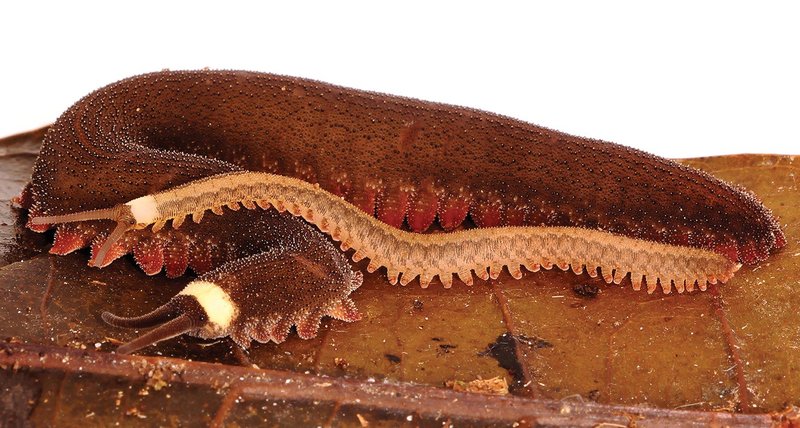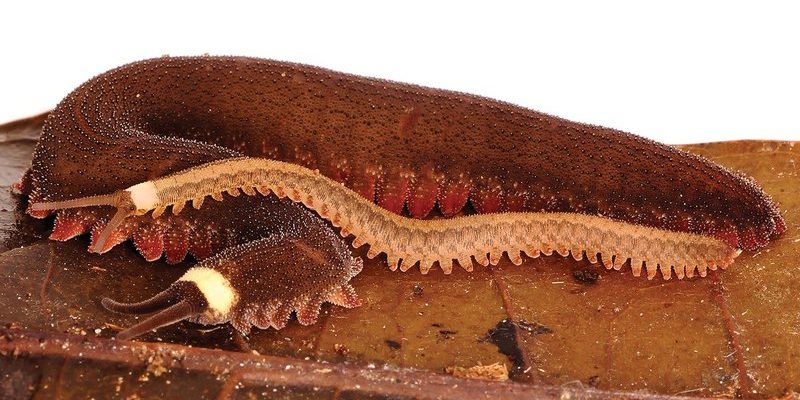
Imagine navigating through a dense rainforest, feeling the humid air cling to your skin. You might come across these fascinating creatures in such microclimates. Just like how you might prefer a cozy coffee shop over a noisy bar, velvet worms also have their favorite environmental conditions. Let’s dive into the world of velvet worms and explore how their microclimate preferences shape their lives and habitats.
What Are Velvet Worms?
Velvet worms are unique, soft-bodied animals that mostly live in tropical and subtropical regions. Picture a creature that looks like a mix between a caterpillar and a slug; that’s a velvet worm for you. They can grow anywhere from a few centimeters to several inches long, flaunting a charming range of colors like green, brown, or even vibrant shades. These creatures belong to a group called “Onychophorans,” and they are more closely related to arthropods like spiders and insects than to earthworms.
What’s truly fascinating about velvet worms is their method of hunting. They have a remarkable ability to shoot a sticky slime to capture unsuspecting prey, which typically consists of small insects. You might think of this hunting technique as a magical web, but instead of waiting for dinner to walk in, they actively pursue it. Now, you can see how their unique body structure and behavior play into their survival.
Microclimates: What Are They?
Before we explore velvet worms’ microclimate preferences, let’s nail down what we mean by microclimates. A microclimate is a small, specific area with distinct climate conditions that differ from the surrounding environment. Think of it like a cozy nook in a large library: While the entire library may be bustling and noisy, that little corner can be serene and quiet.
Microclimates can be influenced by various factors such as topography, vegetation, and human activities. For example, a shaded area beneath a tree will be cooler and more humid compared to an open field under the sun. Similarly, an area near a body of water may have different temperatures due to the water’s cooling effect. Understanding these differences is crucial for species like velvet worms, which thrive in very particular conditions.
Where Do Velvet Worms Live?
Most velvet worms are found in tropical and subtropical forests, but their habitats can vary widely based on their specific microclimate needs. They typically prefer shaded, humid environments with plenty of leaf litter where they can hide. Think about a rainforest floor, bustling with life, with layers of decaying leaves providing the perfect hiding spots. These environments help maintain the moisture levels that velvet worms depend on.
You might be wondering why humidity is so essential. Velvet worms have a unique skin that is permeable, meaning they can easily lose moisture. This makes them susceptible to drying out, especially in warm or dry conditions. So, the lush, damp environments not only provide shelter but also help them retain the moisture they need to survive.
Microclimate Preferences of Velvet Worms
So, what specific microclimate conditions do velvet worms thrive in? Here are some key aspects:
- Humidity: Velvet worms prefer high humidity, typically around 80-100%. This helps them maintain their moisture levels.
- Temperature: They thrive in cooler temperatures, often between 15°C to 25°C (59°F to 77°F). Too hot, and they risk drying out.
- Shade: They need shaded areas, as direct sunlight can quickly deplete their moisture and harm their delicate skin.
These preferences explain why velvet worms are most often found in specific habitats. If the conditions shift—say, due to deforestation or climate change—it can significantly impact their survival. That’s why understanding their microclimate needs is vital for conservation efforts.
The Role of Microclimates in Velvet Worm Conservation
Here’s the thing: since velvet worms depend so much on their microclimates, any change in those environments can affect their populations. Deforestation, climate change, and urban development are some threats that can alter the delicate balance of their habitats. For instance, removing trees not only exposes them to sunlight but also reduces humidity around them. This can lead to increased mortality rates, making it harder for their populations to thrive.
Conservation efforts are crucial to preserving these unique creatures and their environments. Protecting forests and maintaining the microclimate conditions that velvet worms favor ensures that these fragile creatures continue to exist. Some conservationists work to create protected areas that preserve the natural habitats necessary for the survival of velvet worms and other species that rely on the same delicate ecosystems.
How Do Velvet Worms Contribute to Ecosystems?
Velvet worms play an essential role in their ecosystems, serving as both predators and prey. When they capture insects, they help maintain a balance in the food web. Plus, their activities contribute to soil health. As they move through leaf litter, they break down organic materials and recycle nutrients back into the soil, promoting plant growth.
You might not think about it, but even such small creatures have a significant impact on their environment. By understanding their role, we can appreciate the complexity of ecosystems and the importance of every little player within it.
The Future of Velvet Worms
As we look to the future, understanding velvet worms and their microclimate preferences becomes increasingly critical. Climate change poses a significant threat to all species, and velvet worms are no exception. Changes in temperature and humidity can drastically alter their preferred habitats. Conservationists and researchers are focused on studying these vulnerabilities to develop strategies that can help protect velvet worm populations from potential extinction.
Honestly, by working to safeguard their environments, we’re not just saving velvet worms; we’re also protecting the delicate balance of entire ecosystems. Every effort counts, even if it might seem small in the grand scheme of things.
In conclusion, velvet worms are fascinating creatures that offer insight into the intricate relationships between species and their environments. By understanding their microclimate preferences, we not only learn about their survival but also how to protect these unique animals for future generations. Each tiny velvet worm holds a story worth telling, reminding us of the beauty and complexity of the natural world.

